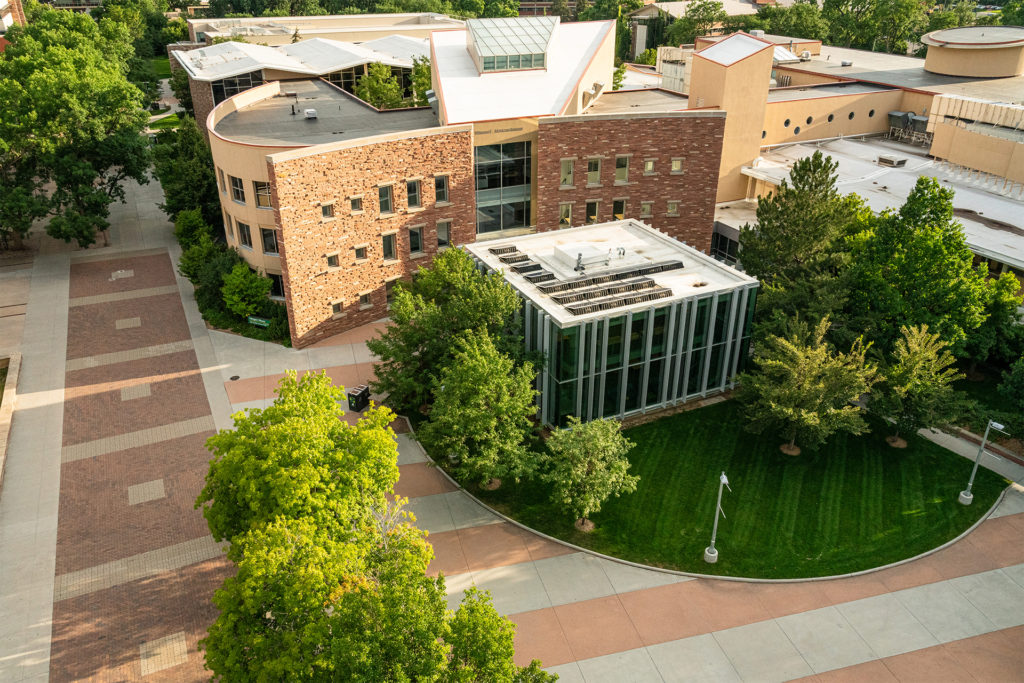
Digital access to information was critical during the global COVID-19 shutdowns that closed libraries and schools in 2020, and librarians and teachers had to get creative to meet the needs of remote learning and research.
Internet Archive, a high-profile nonprofit digital library, launched the National Emergency Library in March 2020. The library scanned print books in their collection to make digital copies and loaned them to people worldwide.

The National Emergency Library closed after three months when four book publishers filed a lawsuit against Internet Archive, arguing that creating digital copies of their books and distributing them was illegal. Internet Archive argued that their work was considered “fair use,” which allows people to use copyrighted works in certain contexts, like teaching and research.
On March 24, a lower court judge ruled against Internet Archive and agreed with the publishers that Internet Archive had infringed on their copyrights. Internet Archive is expected to appeal.
While this legal saga isn’t over yet, the case may set precedent for other legal challenges involving controlled digital lending, a system that allows libraries to loan materials while protecting publishers’ legal rights.
To explain what’s happening and what impact cases like Hachette v. Internet Archive may have on academic libraries and universities, we turned to two experts at the Colorado State University Libraries.
Randyn Heisserer-Miller is the head of Collection Strategies at CSU Libraries. He is a key player in negotiating contracts with publishers and vendors, leading CSU Libraries’ initiatives to support open access scholarly publishing and securing library resources for researchers. Heisserer-Miller is also a member-at-large for the Poudre River Public Libraries’ Board of Trustees.
Khaleedah Thomas is a copyright and open access librarian at CSU Libraries. Thomas helps students and scholars navigate author rights and fair use issues in research and scholarship. She is a member of the University Intellectual Property Officers (UIPO).
So what’s the big deal about Hachette v. Internet Archive? What’s at stake?
Thomas: The issue at the heart of this case centers around who exerts control over the digital copies of physical objects. At the crux of this argument is the first sale doctrine, which says that if you buy a copyrighted work, you have the right to sell, lend or share your copy without permission from or paying the copyright holder. Can the first sale doctrine extend to the practice of controlled digital lending? Does CDL qualify as a transformative use under the first factor of fair use?
The lower court resoundingly rejected IA’s fair use defense, finding each of the four fair use factors weighing in favor of the publishers, with a particular emphasis placed on the lack of the transformative nature of IA’s CDL initiative.
Before this case, many libraries have been quietly practicing CDL, but few were as audacious as IA to practice it so openly with little restrictions, making IA a ripe target for publishers to go after. The outcome of this case may have a chilling effect on libraries already engaged in or considering CDL, potentially trapping libraries into the rent-but-never-own cycle of e-book licensing where libraries have little negotiation power.
Heisserer-Miller: This case is critical for library collection development in the 21st century and, particularly during and after COVID-19, when digital formats have become increasingly essential to library supporting the work of faculty, students and staff as an equity issue.
While IA was very open about using CDL on a large scale, libraries across the country have benefited from this expanded interpretation of copyright law. Libraries that purchase digital copies of books are constrained by cost and use.
The heart of this case was to say that libraries had a right to digitize copies of physical books they already owned and lend them out digitally, subverting the current usury system of needing to purchase a much more expensive digital copy for the same purpose.
Where a paperback copy of a popular title may be $35 on the commercial market, libraries will pay $75 to $150 or more for the ebook copy depending on how many users they wish to have concurrent access. Academic titles and textbooks see a much higher increase.
You both mentioned the idea of “controlled digital lending.” What is controlled digital lending and how does Internet Archives’ lending service differ from academic libraries?
Heisserer-Miller: First, I should explain print and digital lending, which are both ways that libraries can provide resources to their patrons. The difference is the format and cost.
Print lending is the traditional way libraries have loaned books to patrons from physical shelves within the library. Digital lending can come in many different forms including whole book, chapters or articles. Like print lending, the loan period can be for a couple of hours, weeks or months. Digital lending can be titles digitized by library vendors such as ProQuest or EBSCO or by libraries themselves through controlled digital lending.
Generally, digital lending is becoming more popular because it is immediate and can be done anywhere – the patron does not have to come into the physical library to get a copy of the book. The main difference is the cost. Digital copies of books are more expensive and restricted.
Thomas: Controlled Digital Lending is the practice of lending digital copies of books or other materials in a library’s collection to users in a way that replicates traditional library lending. It’s based on the one-to-one “owned to loaned” ratio, meaning that a library can only lend a digital copy of a book if it has a corresponding physical copy in its collection.
While lending a digital copy, the physical copy is removed from circulation and can’t be borrowed by anyone else until the digital copy is returned. By shifting the format from physical to digital, CDL promotes equitable access to material by making it easier for patrons who may not have access to physical libraries due to geographic, economic, mobility issues or other constraints.
One of the main differences between IA’s practice of CDL and a typical academic library is the global scale of IA’s CDL program. IA’s library is open to anyone in the world with a valid email address, whereas most academic libraries only serve a small subsection of the population. However, the largest departure from typical CDL programs is that during the brief duration of the National Emergency Library, IA lifted the technical controls enforcing its one-to-one owned-to-loaned ratio allowing thousands of patrons to borrow the same ebook simultaneously.
Were you surprised by the ruling against Internet Archive?
Thomas: Initially, I was surprised by the ruling because I only had a surface-level understanding of the scope of IA’s CDL program and was unaware of its massive scale. I don’t believe that most libraries would attempt to digitize their entire collection and share it so freely with the public.
Given the defeat of CDL under fair use, I wonder if libraries would be more successful relying on Section 108 of the Copyright Act as a legal defense. Section 108 is an exception to copyright that only applies to libraries and archives, which provides limited authorization to reproduce and distribute copyrighted works without permission for the purposes of preservation, replacement and research.
What have been some of the reactions to the case among the library community?
Thomas: Overall, from what I’ve read, the reactions to the case within the library community have been mixed so far. Some believe that IA’s CDL program pushed the acceptable limits of a reasonable CDL program too far and was asking for legal trouble. Others support IA as a test case for CDL as a viable alternative to exceedingly expensive ebook licensing, where publishers can pull content on a whim.
One of the main differences between IA and a traditional academic or public library is that IA is an entirely digital library with no physical locations. Given its completely digital nature, it’s easier for publishers and courts to downgrade its status as a library and portray it more as a pirate website.
An example of this mentality can be found in one of the more surprising rulings in this case, where despite IA’s nonprofit status, the judge still ruled that IA’s use of the publishers’ works was commercial. Even though IA did not make any direct monetary profits, the judge ruled that IA exploited the publishers’ works by using its website “to attract new members, solicit donations and bolster its standing in the library community.”
Ultimately it’s important for traditional libraries to stand in solidarity with IA and embrace their model as a future of libraries that can better serve patrons in this increasingly digital world.